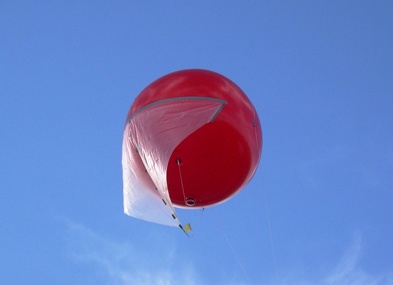ARL Prepares to Launch Hurricane Research Balloons from Tybee Island, GA
The Air Resources Laboratory (ARL) is preparing to launch four specially-designed and equipped balloons from Tybee Island, Georgia around November 8. The launch is a part of the Weather/Hurricane In- situ Sea Surface Probe (WHISSP) project and is being conducted in partnership with the Earth System Research Laboratory (ESRL), with support from ESRL’s Unmanned Aircraft Systems program. In cooperation with the Northern Gulf Institute at Mississippi State University, scientists with ARL’s Field Research Division will launch the balloons over a two-day period — weather permitting. The balloons will be intentionally kept at low altitude, moving with the wind close to the sea surface. Each balloon contains a sonde (small electronics with a GPS and communications capability) that will transmit data, such as altitude, barometric pressure, and position, via a military satellite to the MADIS server in Boulder, CO. The goal of the experiment is to test the ability of the balloons to transmit data via satellite from the ocean surface for several days or more. Results of the field experiment will be used to advance and develop the next phase of the WHISSP program.
Background: The WHISSP project is a part of the NOAA Weather In-Situ Deployment Optimization Method (WISDOM) program’s hurricane intensity research effort. For the WISDOM program, ARL was tasked to design and develop low altitude, low cost, and durable balloons that would be capable of carrying a sonde for up to fourteen days. The idea of using these specially designed balloons is patterned after the French Aeroclipper experiments conducted in the Indian Ocean. However, the Aeroclipper is expensive and difficult to launch. The ARL balloons maintain low altitude with a buoyant ballast line attached at the end of a 50 meter cord. The cord weight is greater than the net lift of the balloon which ensures the balloon never rises above 50 meters. The cost is kept low by using commercially-available polyurethane balloons and making a simple modification to place the sonde enclosure inside the balloon.
Significance: NOAA’s success in improving hurricane track predictions lies in its ability to have better data in areas that are currently poorly observed. Additional real-time data, such as central pressure, in the eye of a hurricane will improve current forecast models. The balloon platforms provide a low cost and safe way to collect continuous measurements from within the eye of a hurricane for days at a time.


